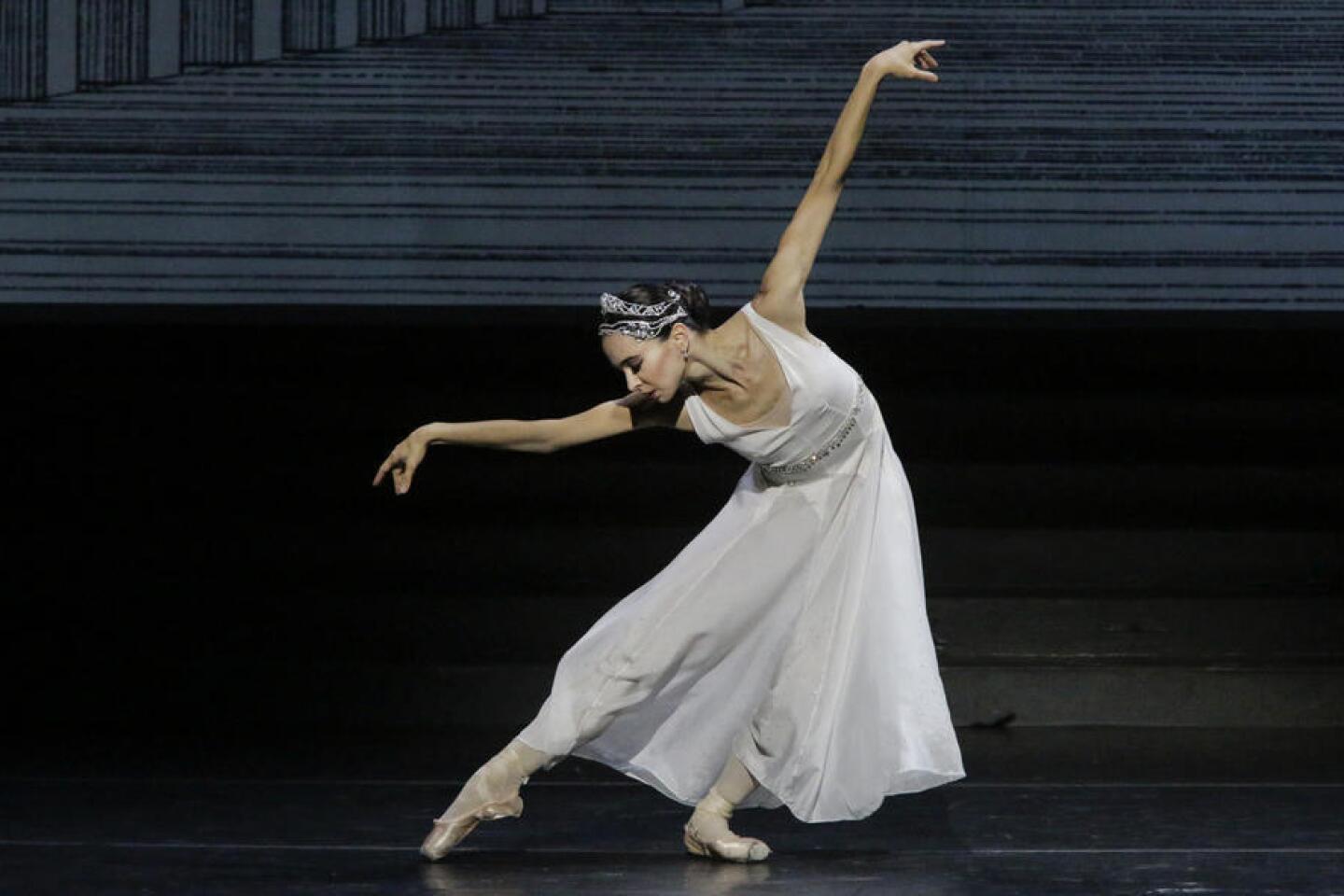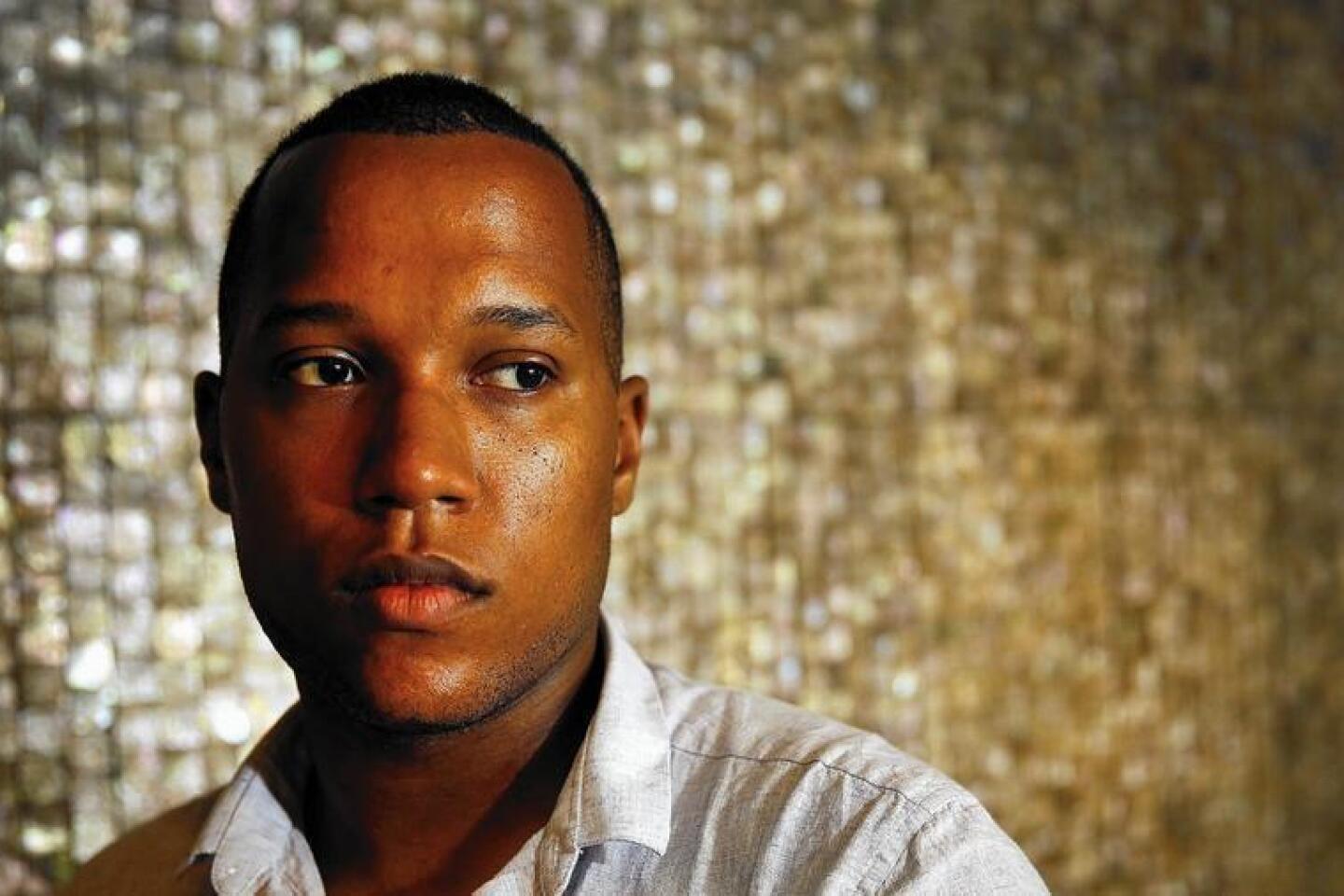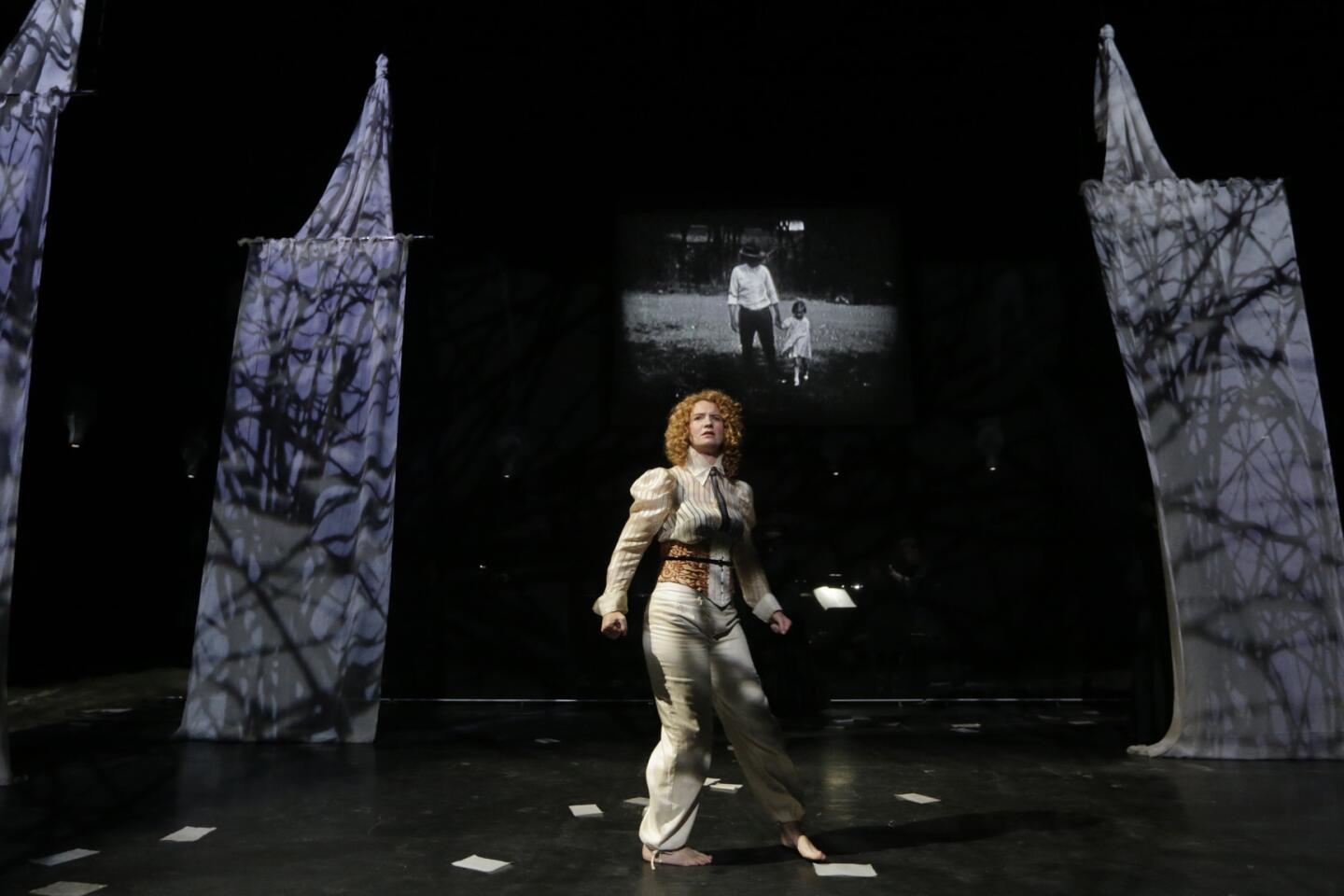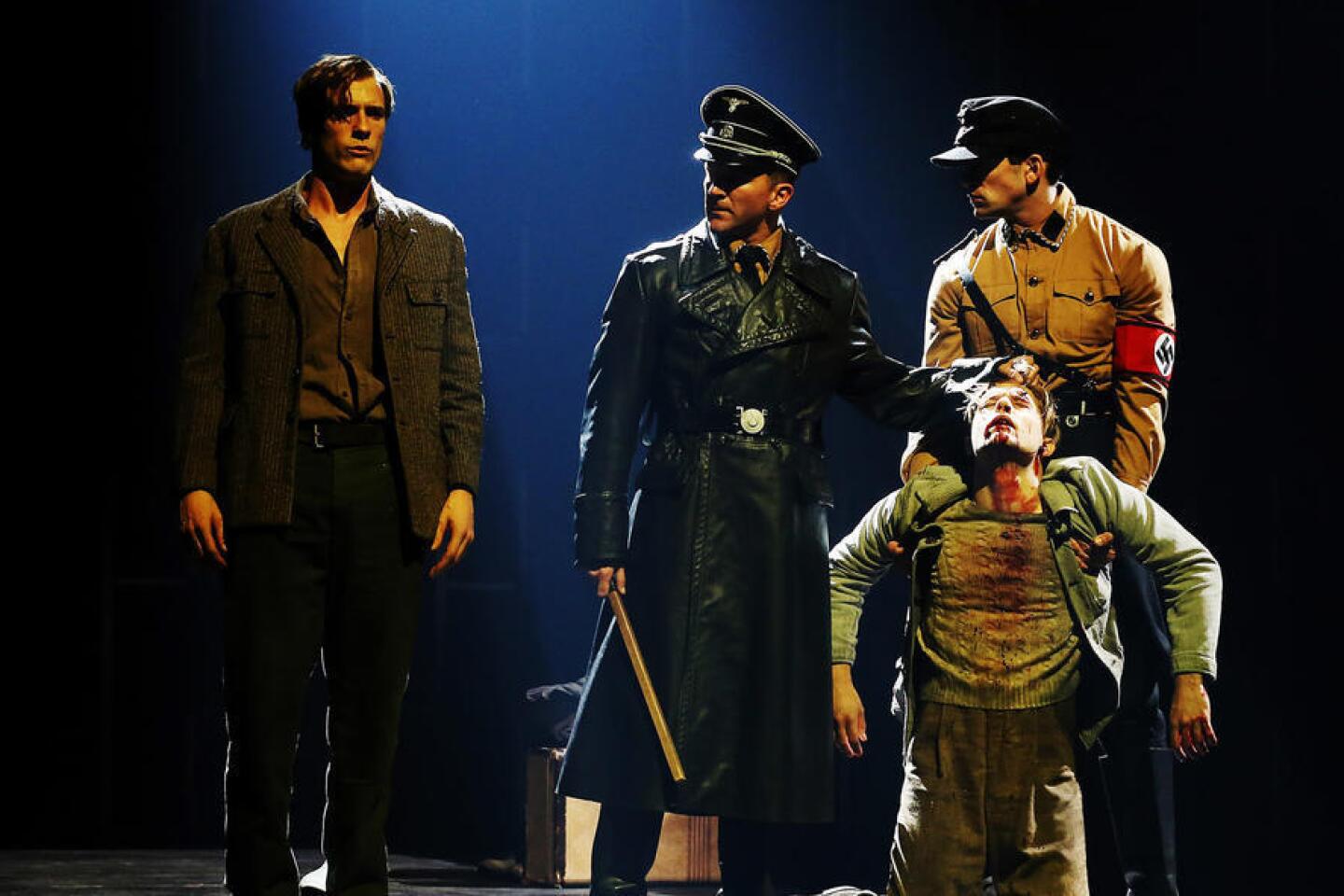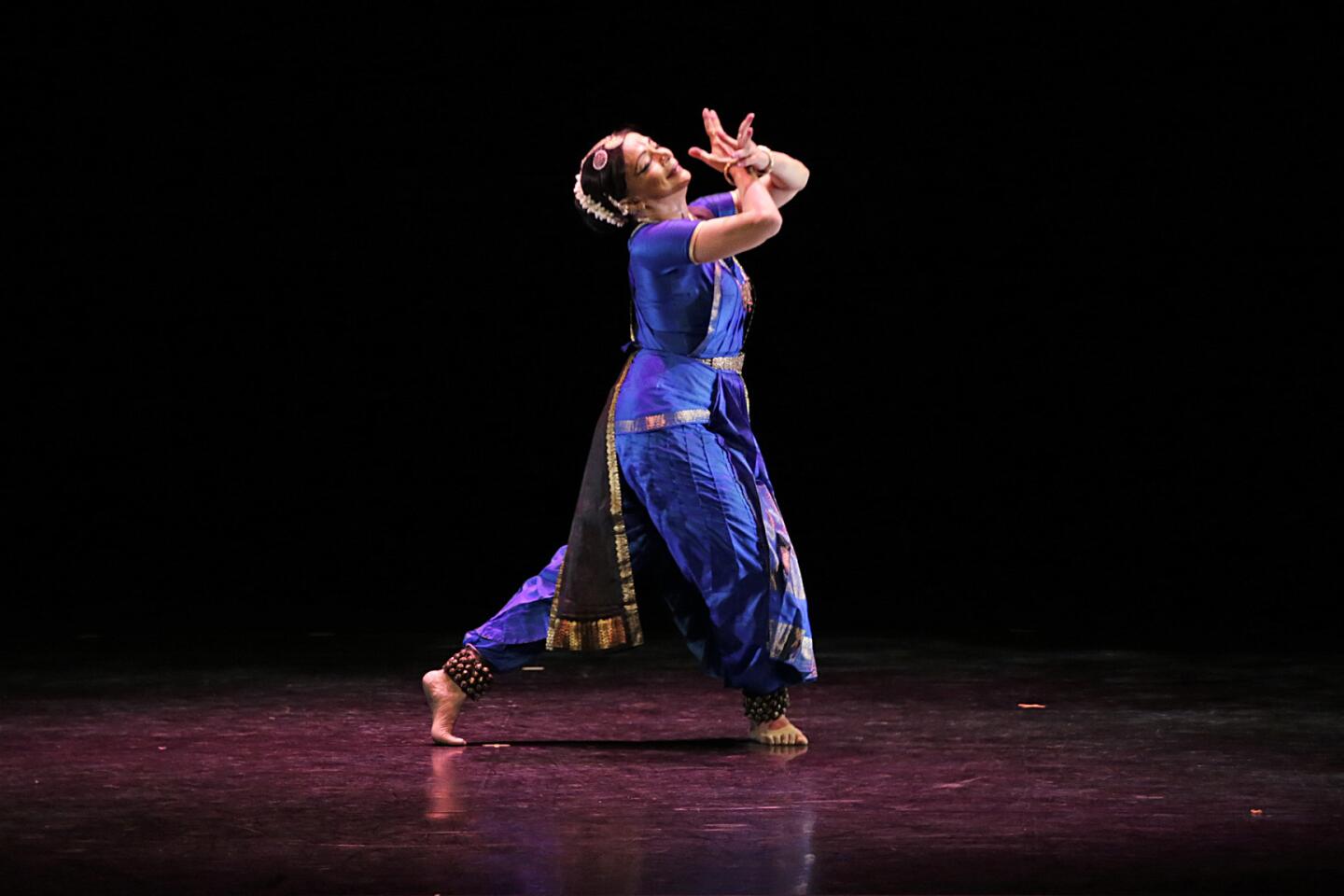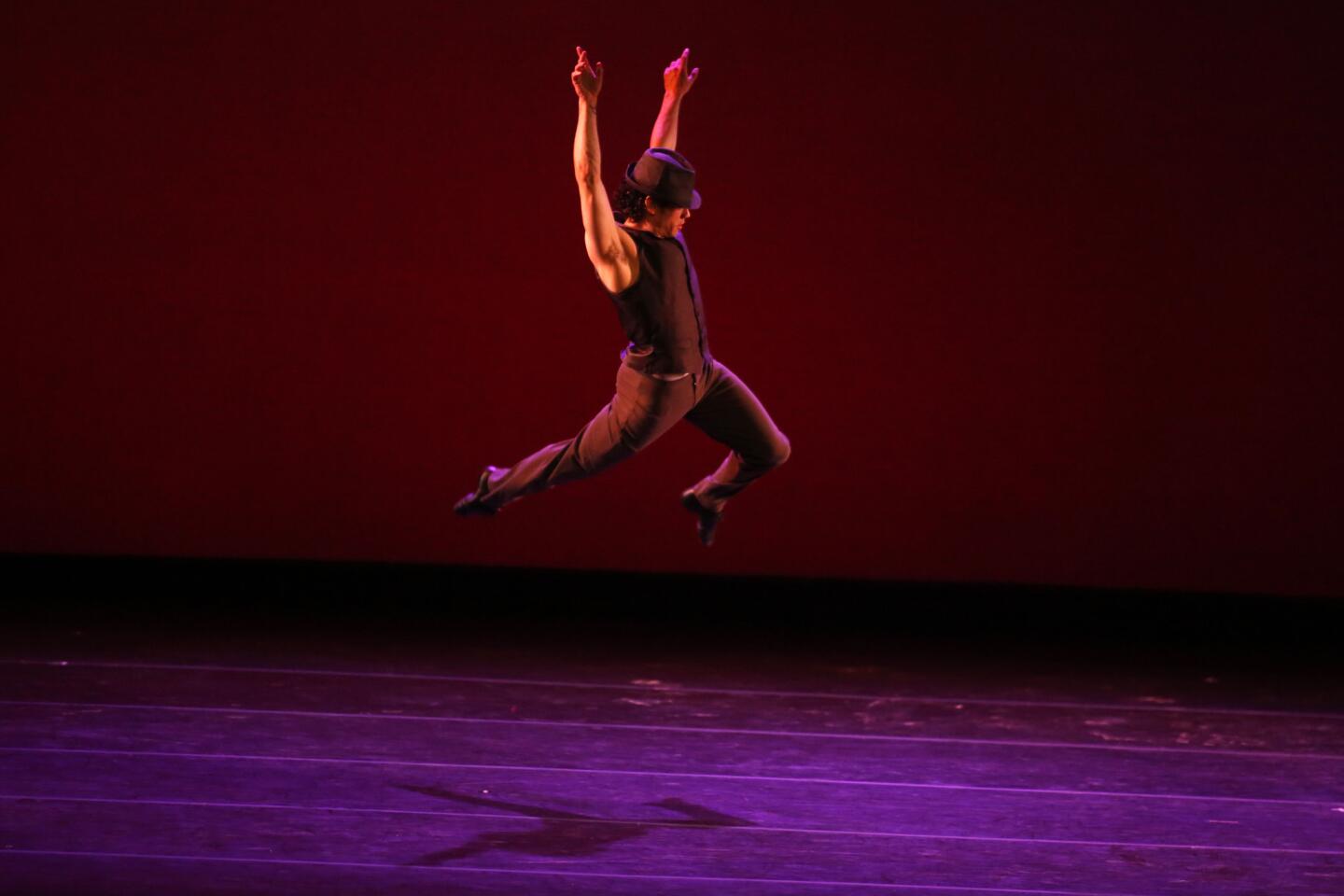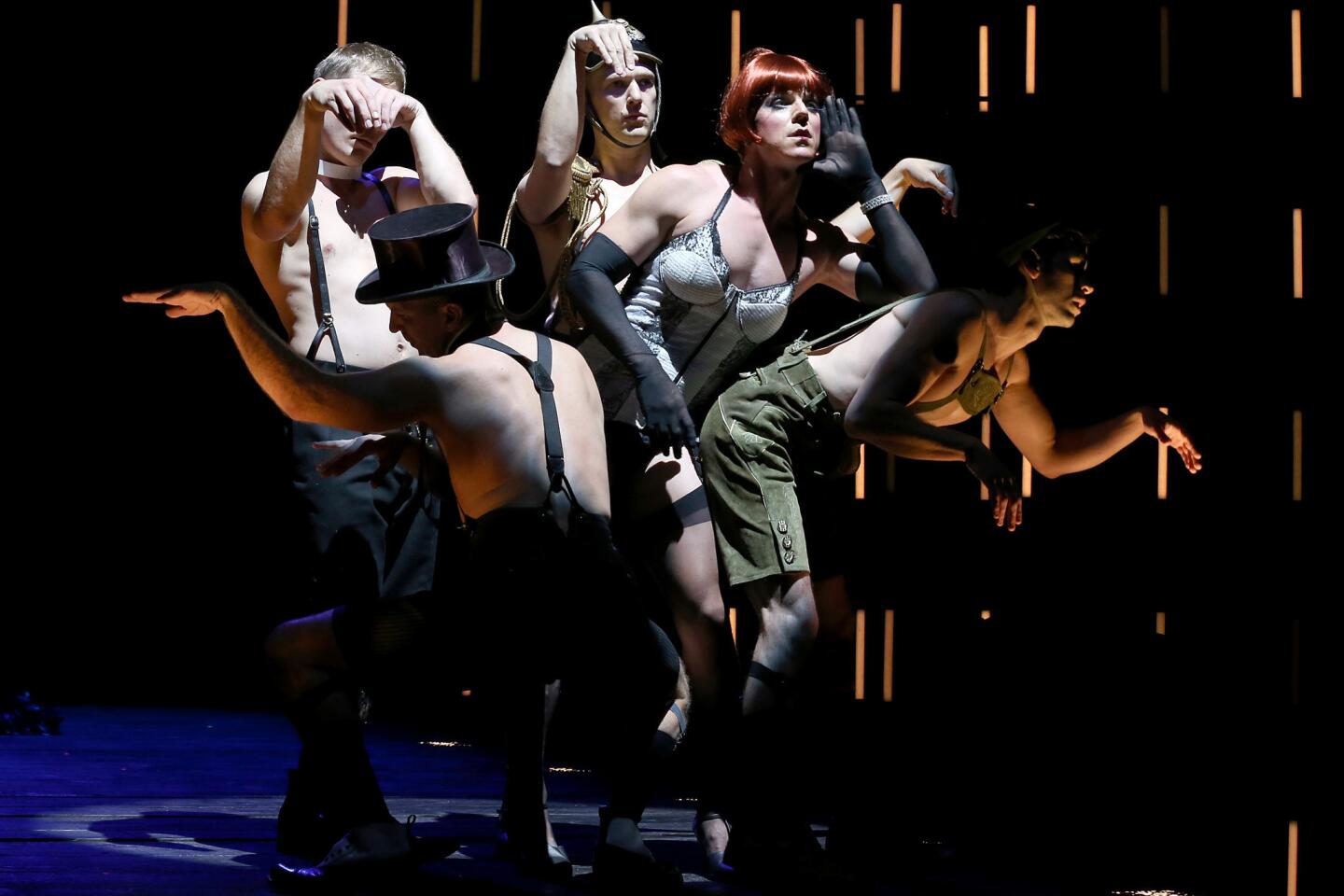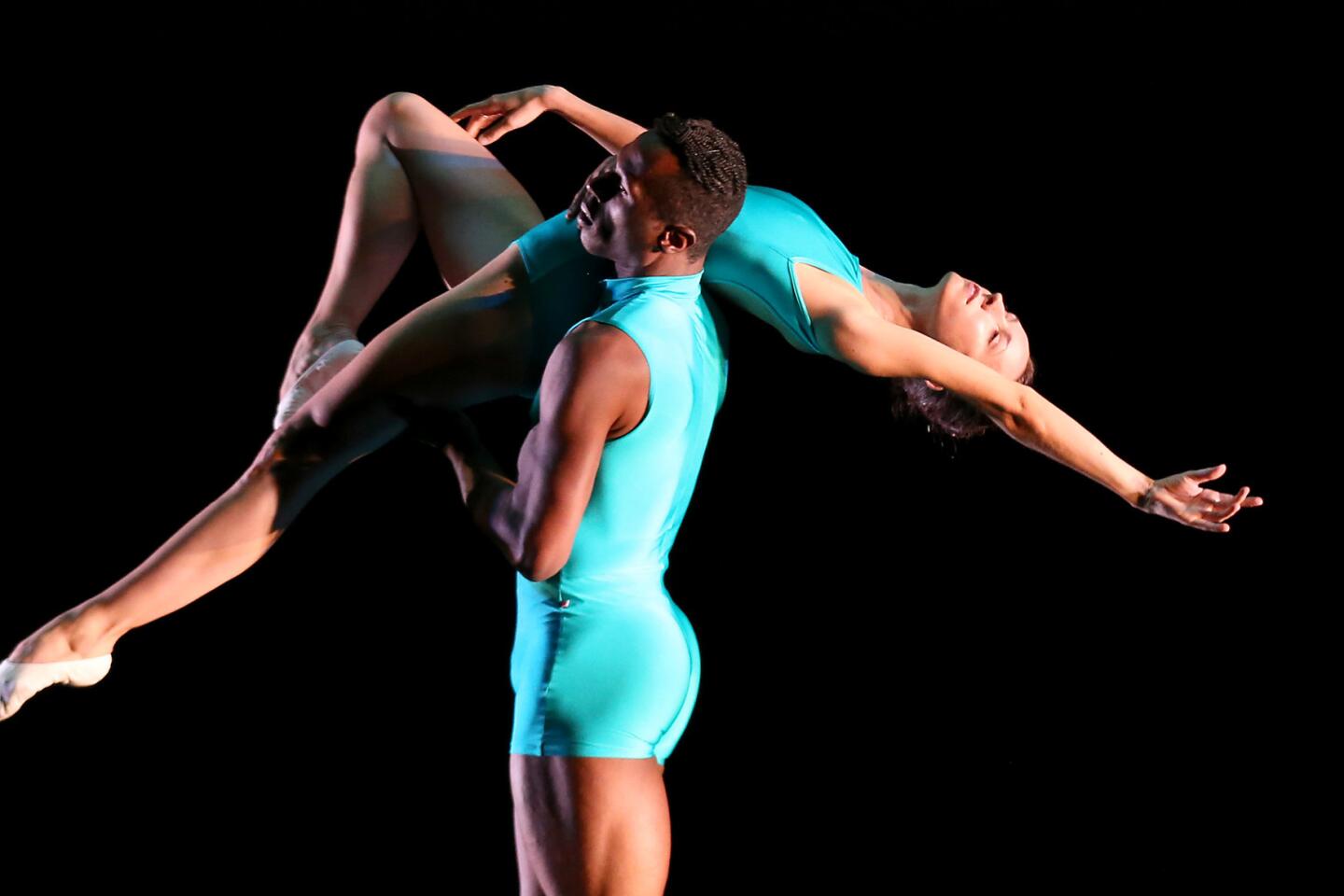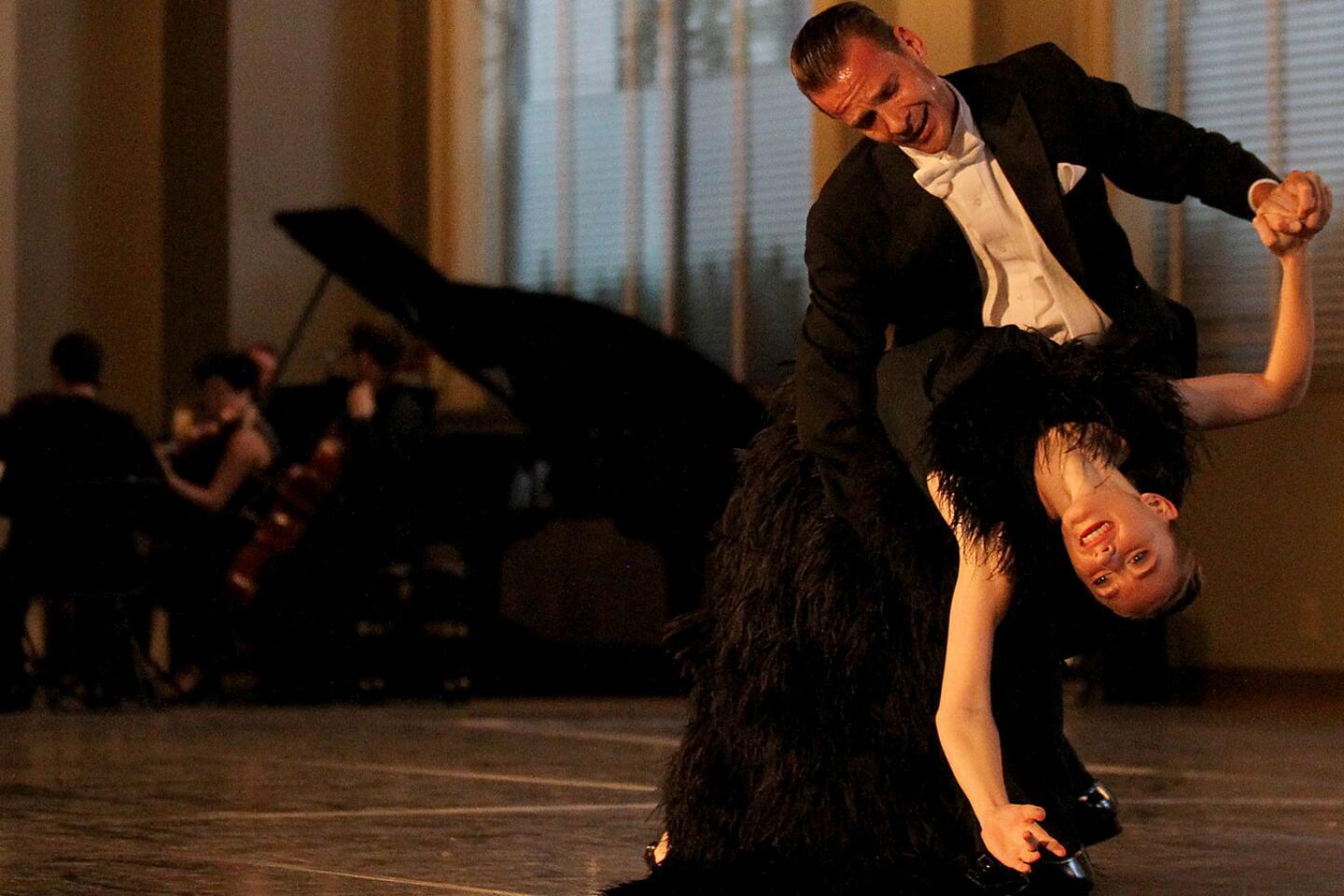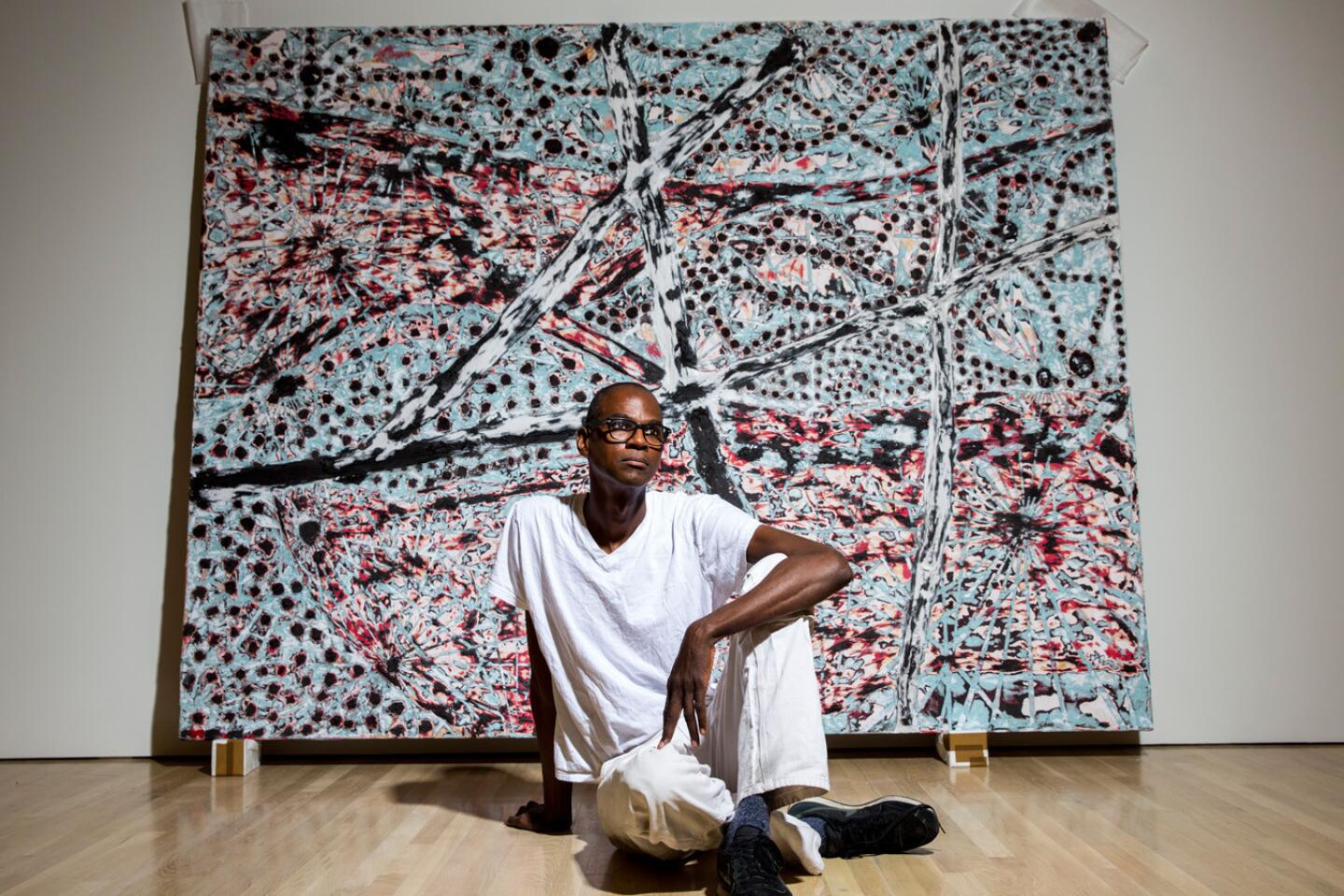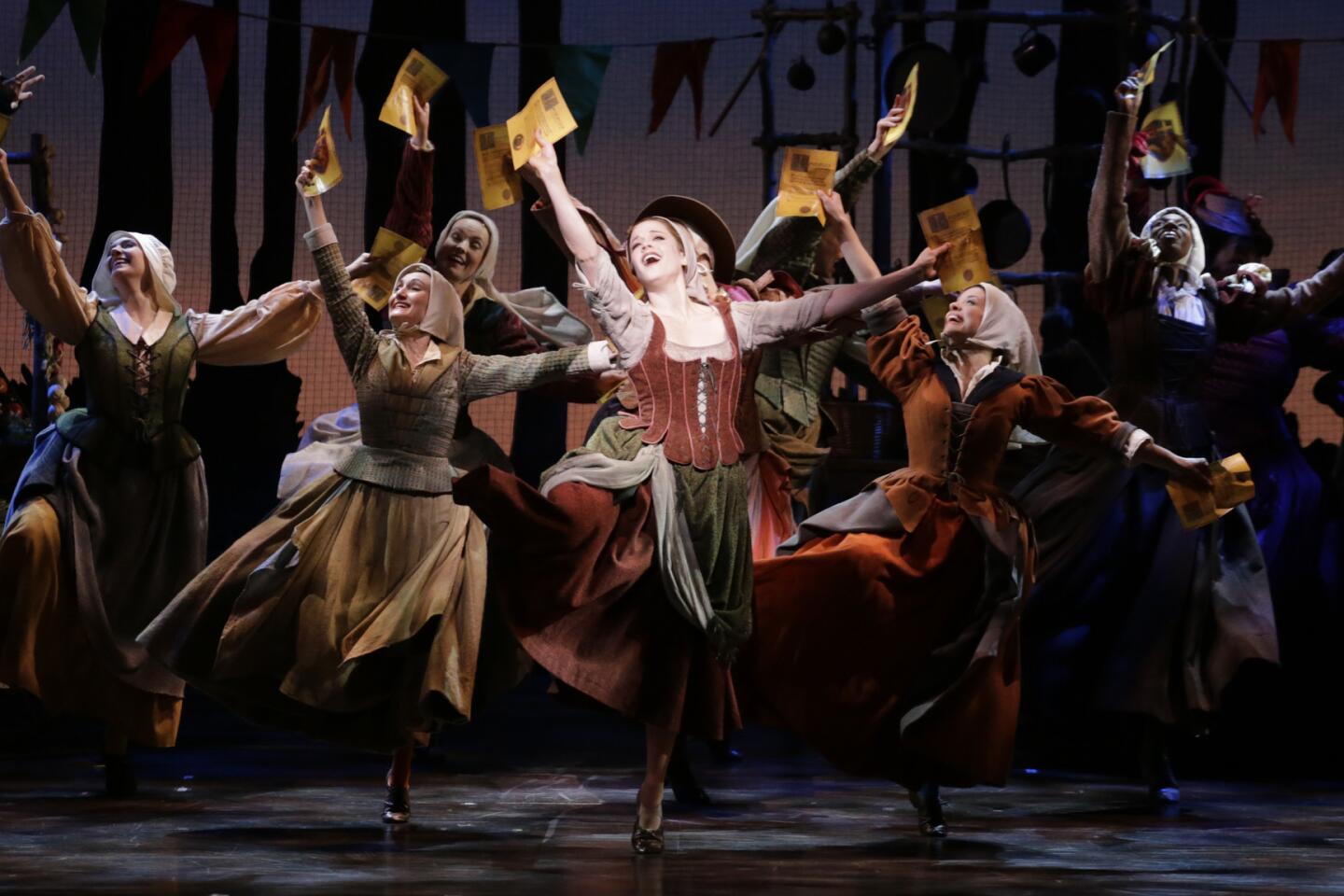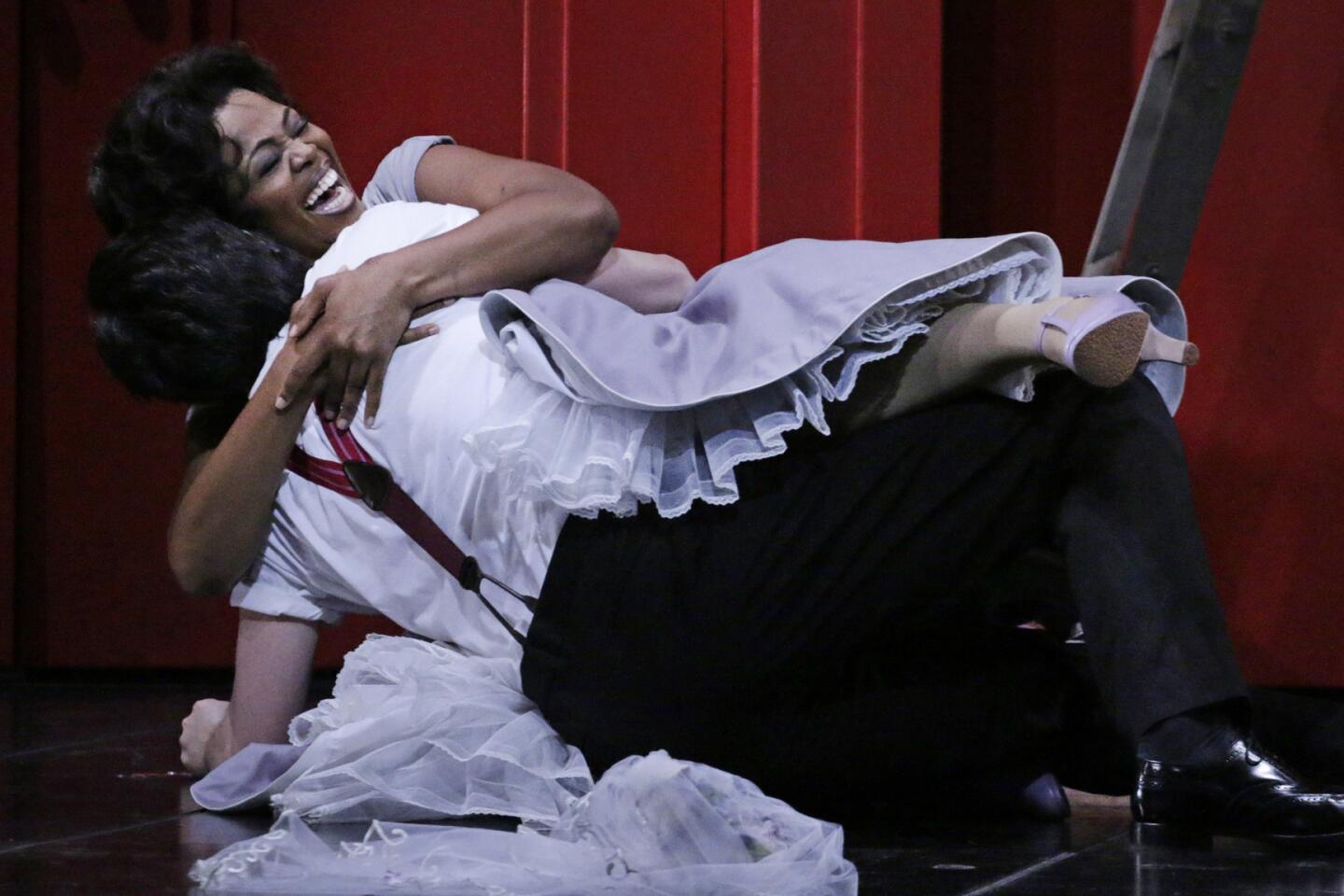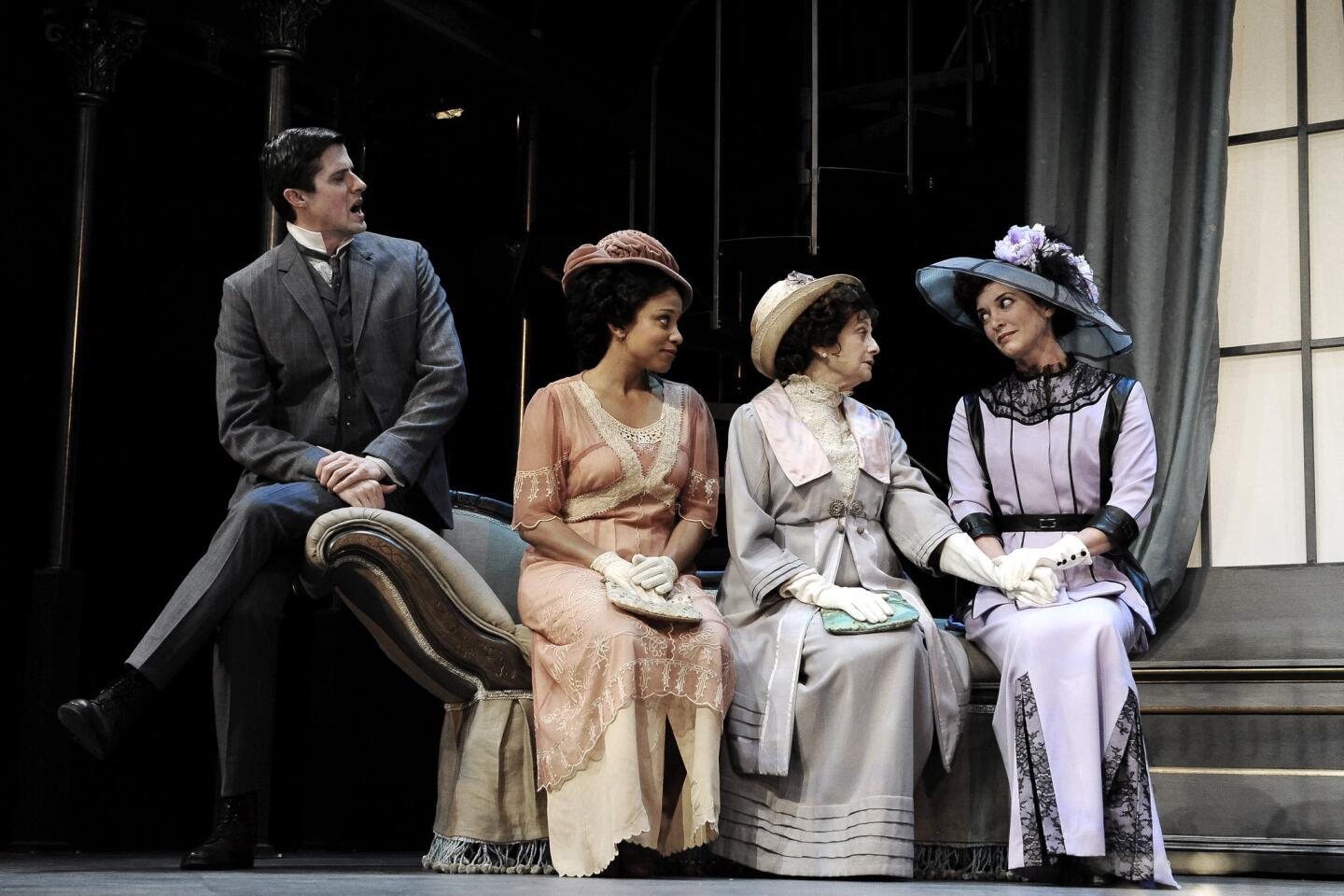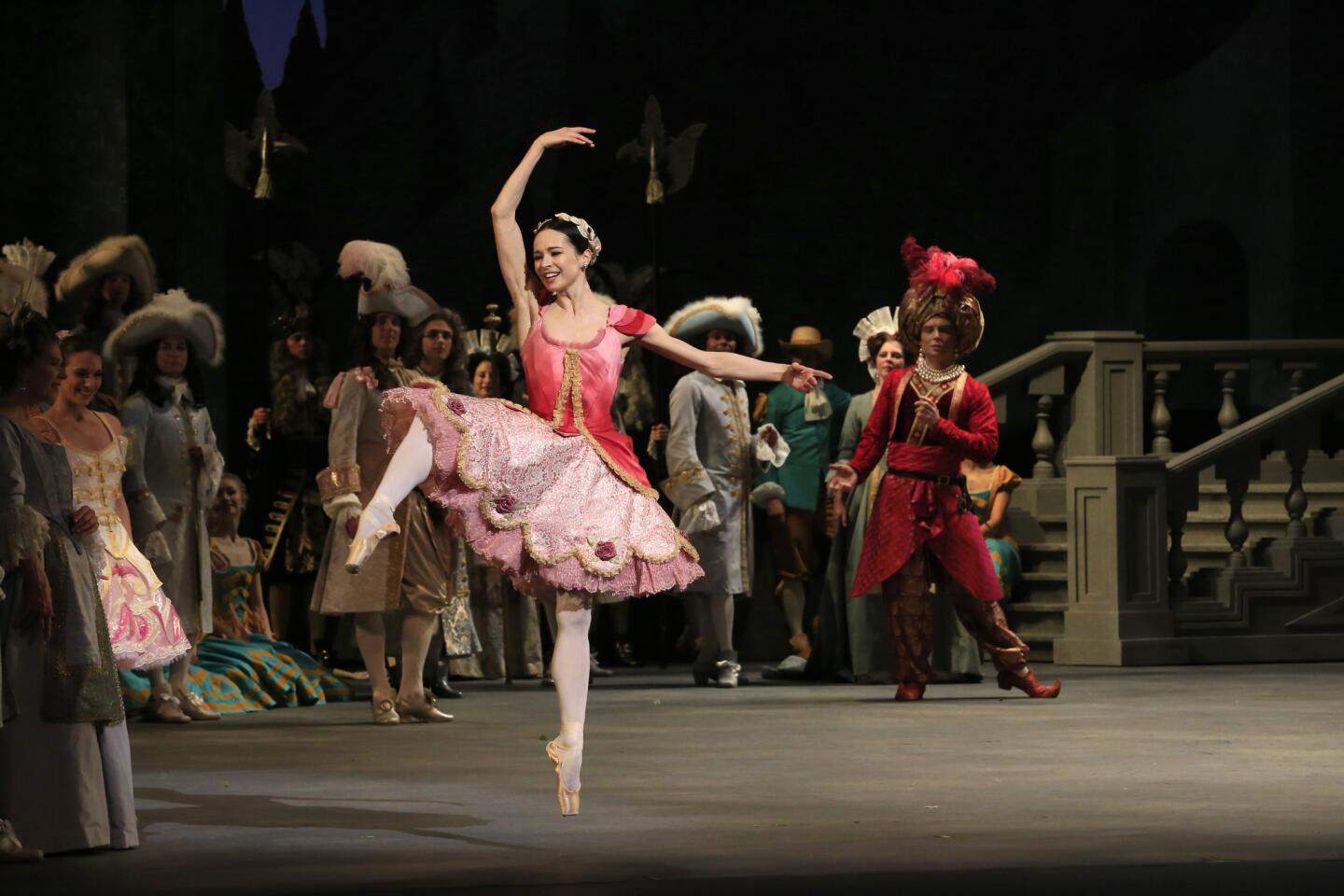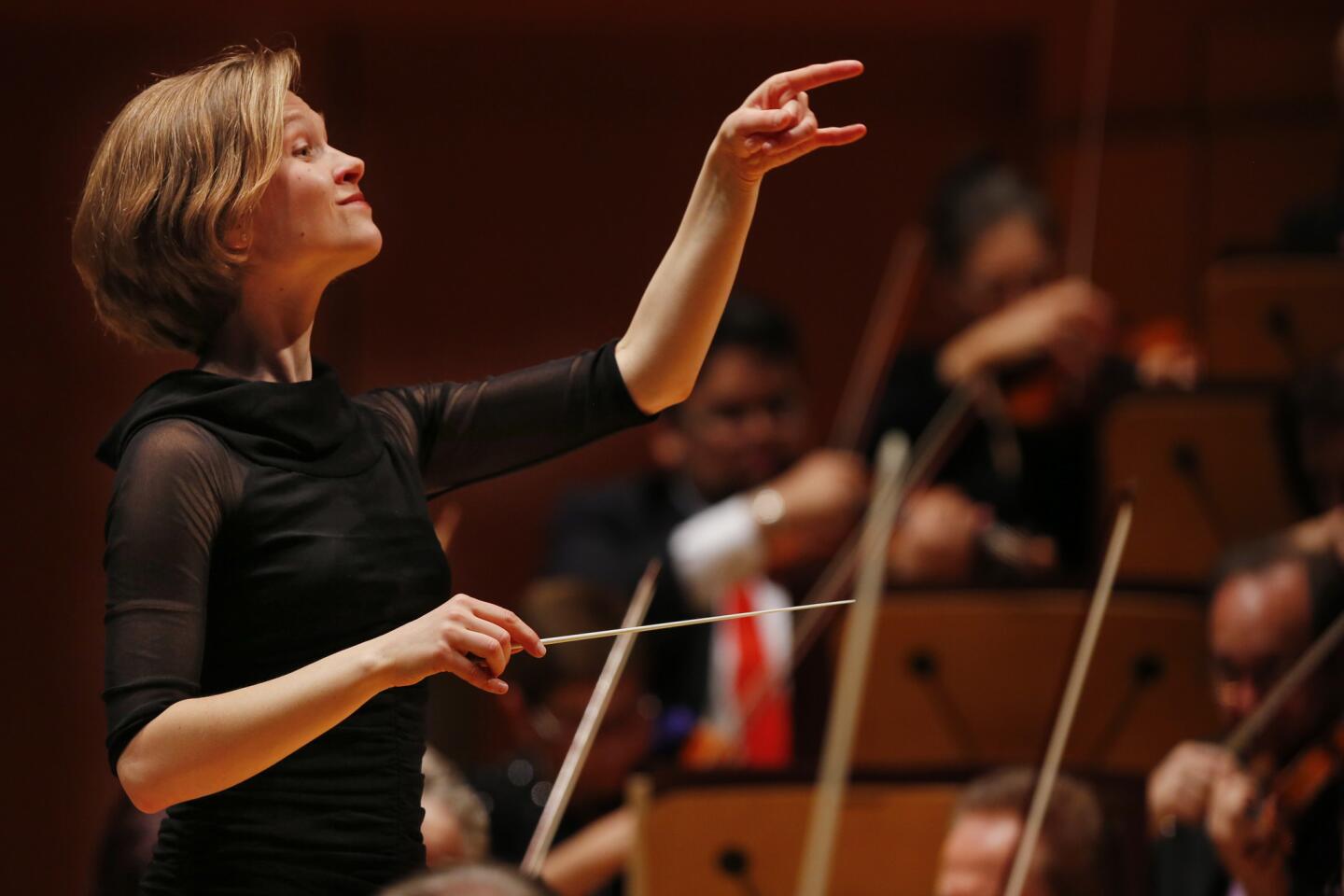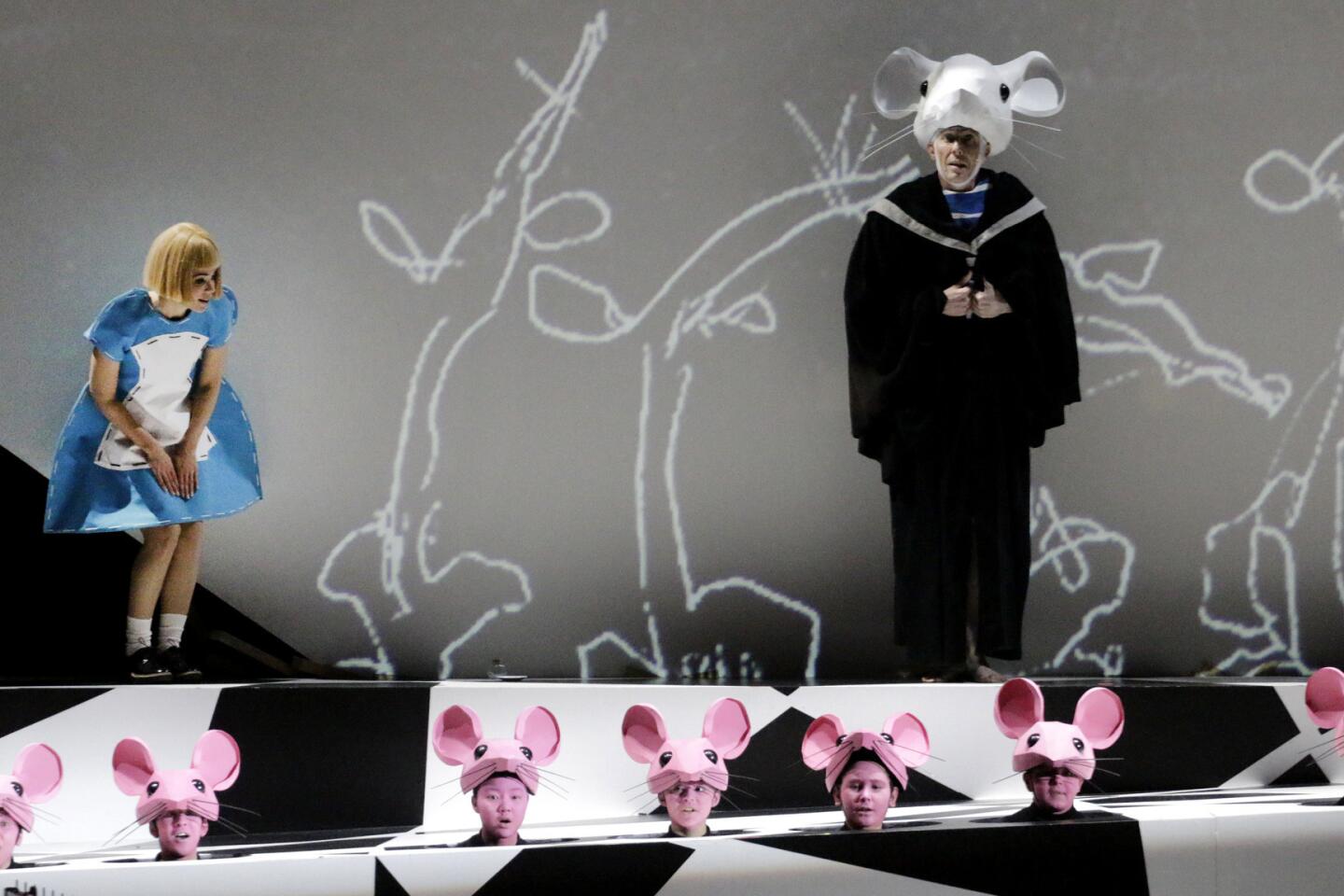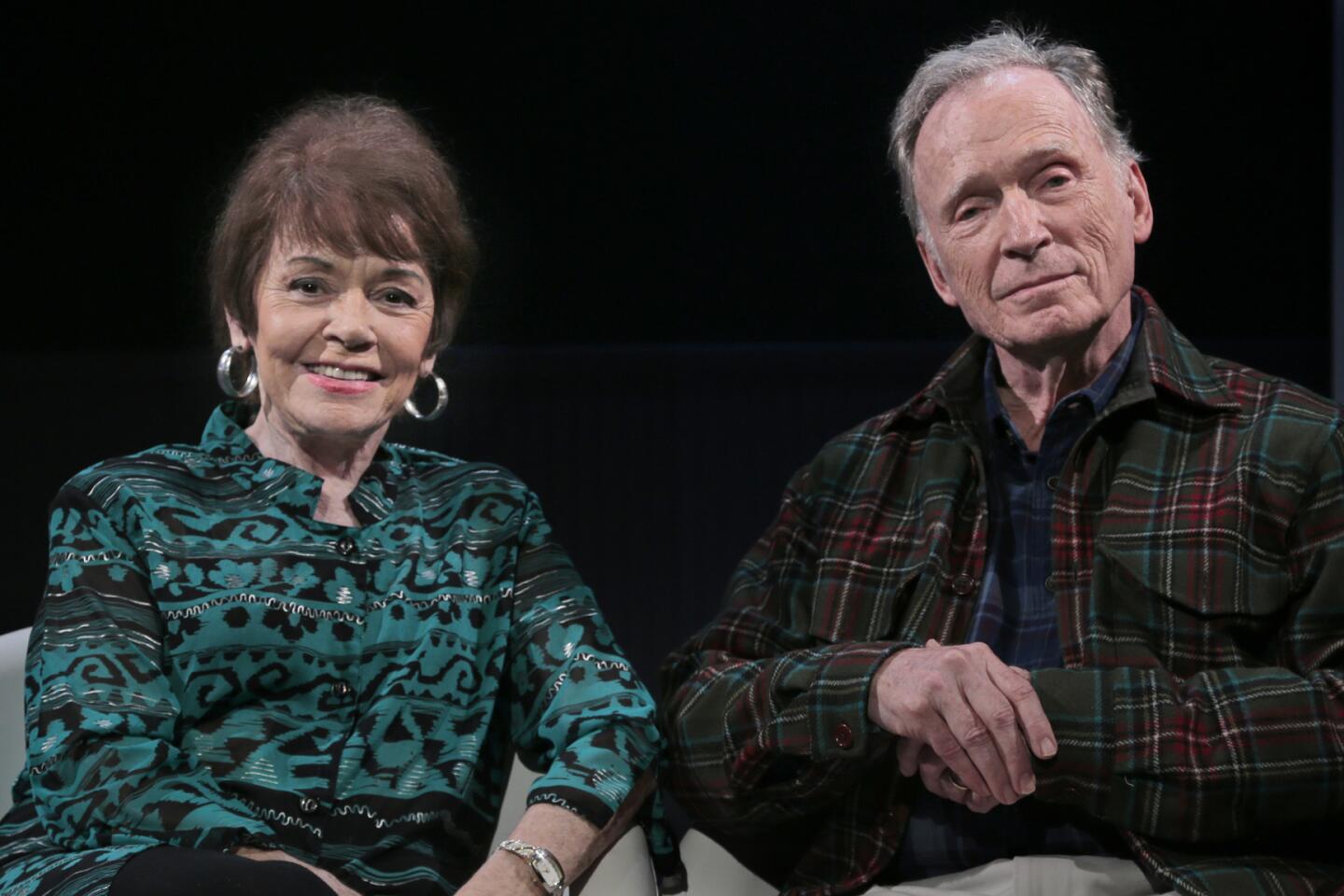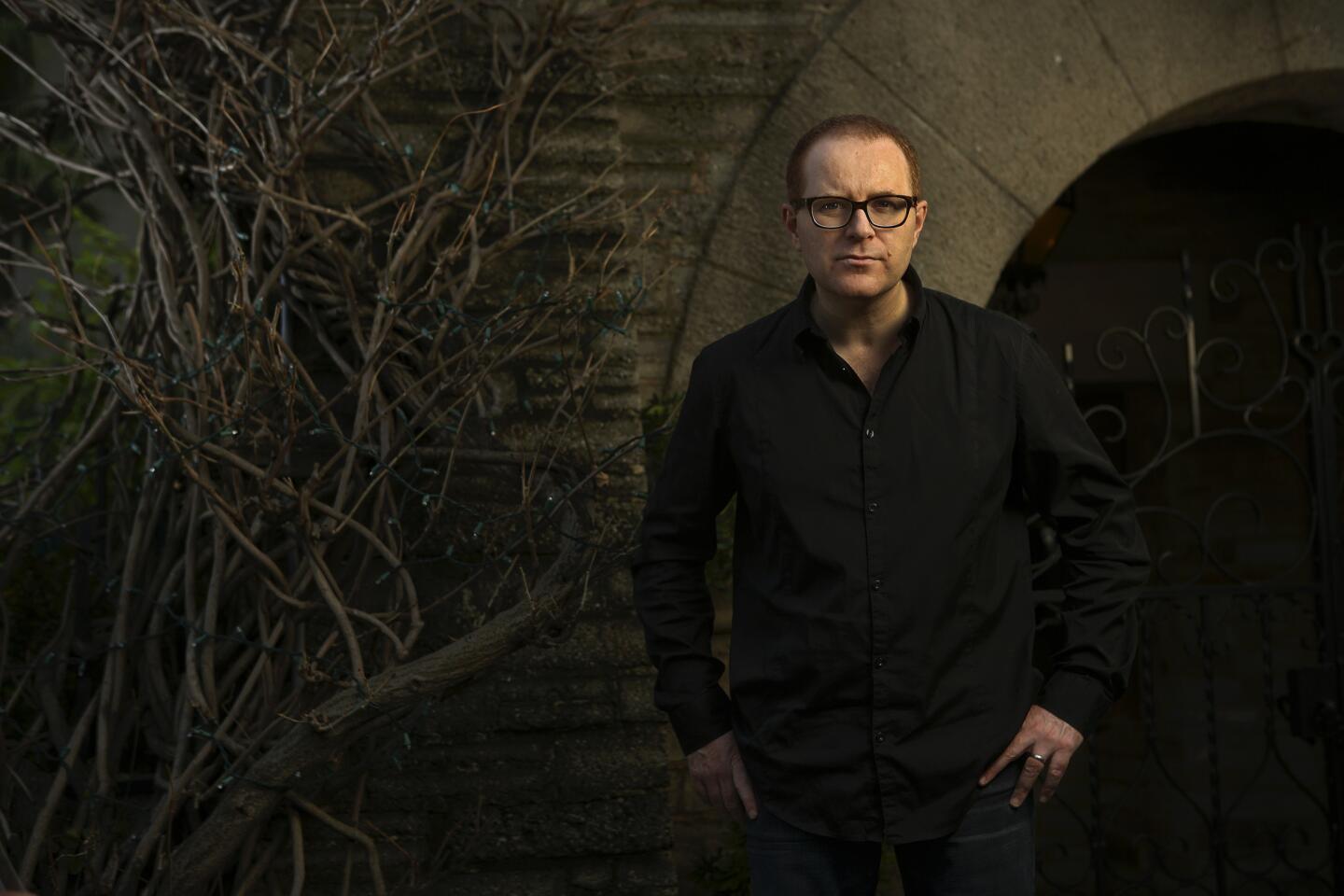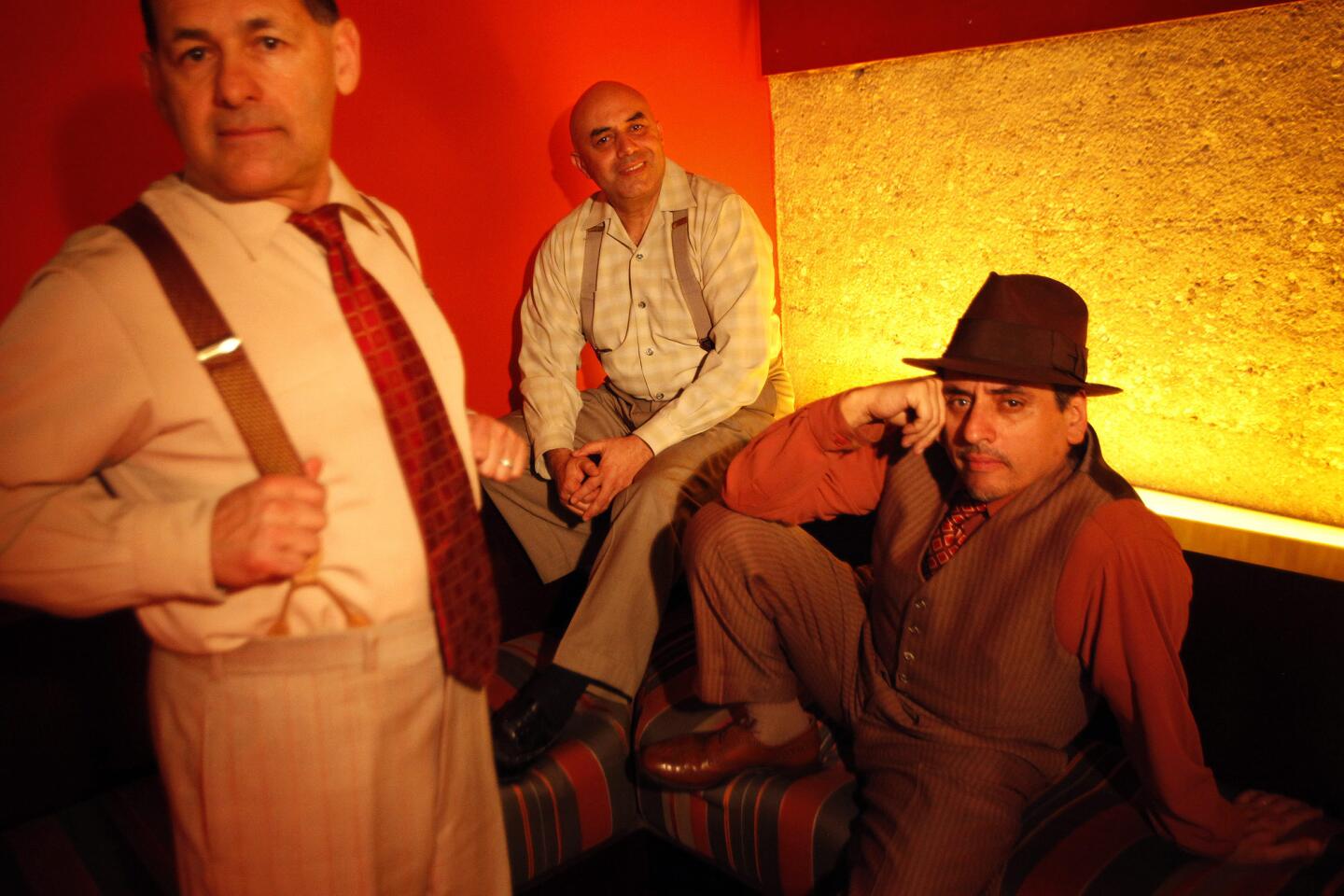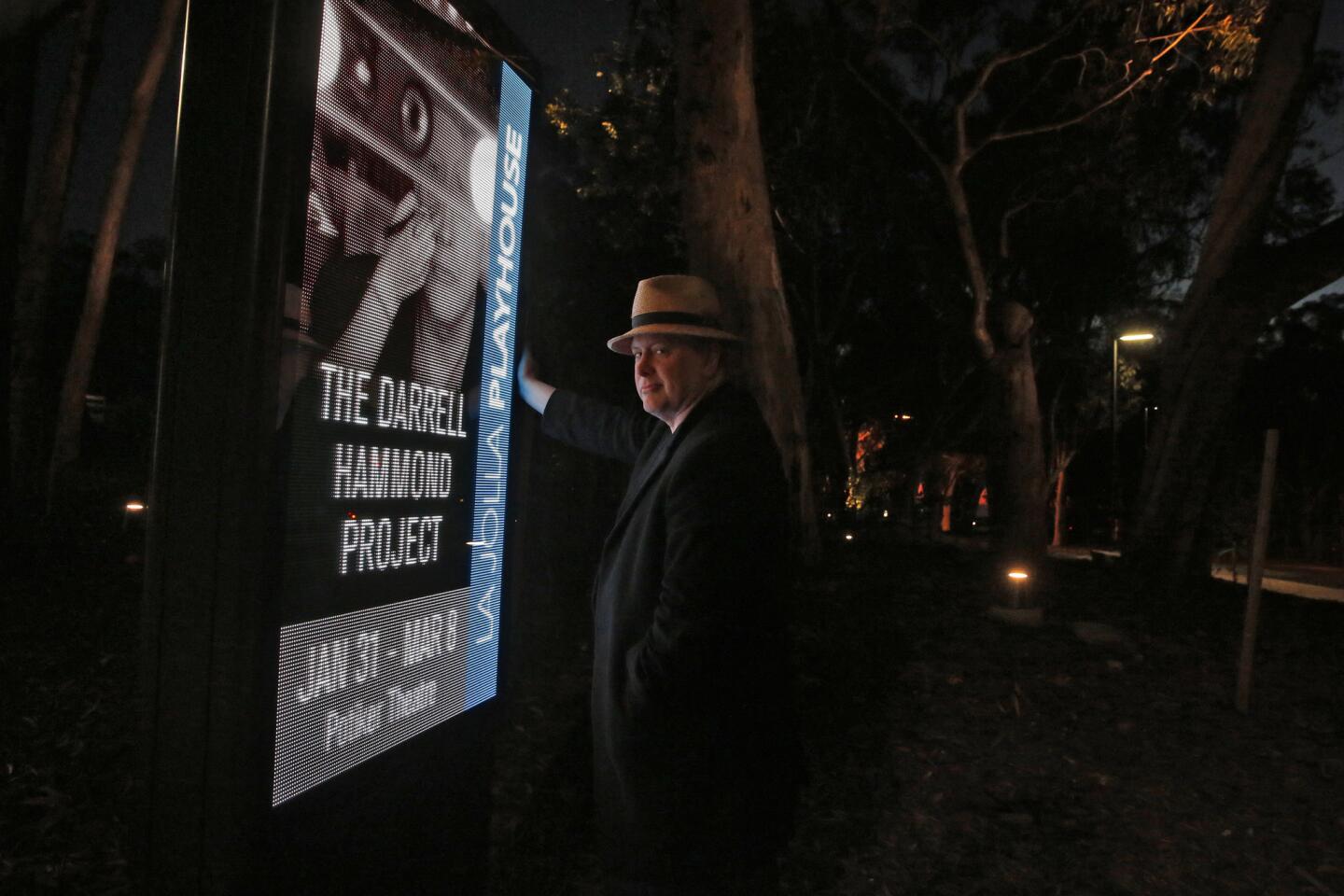NEW YORK — Murmurs of recognition have rolled through audiences for choreographer Camille A. Brown’s “Black Girl: Linguistic Play,” opening Thursday at REDCAT in downtown L.A. as part of a 10-city tour.
In creating this work for six women, Brown has drawn on the games, chants and nursery rhymes that played an important role in her girlhood. Female audience members have recognized themselves in the young girls, adolescents and emerging women on stage, evoked by Camille A. Brown & Dancers through their layered, resonant movement.
SIGN UP for the free Essential Arts & Culture newsletter >>
Brown’s earlier work “Mr. Tol E. Rance” was an ambitious examination of the stereotypes of black entertainers and comedians, including performers in minstrel shows and popular sitcoms. During post-show talk-backs, she often fielded requests from black women to create a piece focused on black female stereotypes, the 35-year-old choreographer recalled during an interview at a Midtown Manhattan coffeehouse.
But she was hesitant to venture into what seemed like familiar territory.
“I’m exhausted by the stereotype,” she said. “I live between the angry black female and the strong black female stereotype. I thought, ‘There’s got to be something else I want to talk about to contribute to this political climate — because we all know the struggles.’ Those are the things that get pushed to the forefront. But what are the things that celebrate us and uplift us, and are culturally specific?”
She found the key to what became “Black Girl” while choreographing the off-Broadway musical “Fortress of Solitude” last year at the Public Theater.
“Its jumping-off point was childhood and memory,” said Brown, who grew up in Queens, attended New York’s LaGuardia performing arts high school and then went to what is now the University of North Carolina School of the Arts. She found further inspiration in Kyra D. Gaunt’s 2006 book “The Games Black Girls Play.”
“As soon as I read it, I thought this is the way this piece needs to go. Basically she wrote about the musical contributions of black girls,” Brown said, adding that her play translates those contributions into movement.
“A lot of times these don’t get lifted up and are seen as trivial. But I wanted to say, what happens when you honor the things that I know were highly intelligent and skillful and you put them onstage and claim them as art?”
What happens when you take double Dutch and make it an art? she asked.
“Because that’s what it is,” Brown said. “So when I decided that I wanted it to come from a personal place, from childhood, I really had to go back and figure out was that first time that someone made me feel different.”
“Black Girls” premiered in September at New York’s Joyce Theater. Brown opens the work herself with a remarkable, rhythmically complex solo on a multilayered set of platforms, suspended mirrors and a wall that appears decorated with graffiti. She fluidly travels through various levels of the space without missing a beat or losing her fierce concentration. Her intricate footwork — and that of Cat Foster, who eventually joins and matches her — reveals the intricacies of double Dutch and almost becomes a tap dance in sneakers.
“When was the first time I was told that I couldn’t take up space? That I had to hold back and be silent?” she mused during the interview. “And what happens when you give yourself permission to own the space?”
1/28
When the Mariinsky Ballet performed “Cinderella” at the Dorothy Chandler Pavilion on Oct. 8, even the wondrous Diana Vishneva as Cinderella couldn’t bring unity to the movement, but she danced with flawless, fearless authority. Read more >>
(Lawrence K. Ho / Los Angeles Times) 2/28
Branden Jacobs-Jenkins leaves a rehearsal of his play “Appropriate,” opening Oct. 4 at the Mark Taper Forum, to eat first with a reporter, then later with his agent and some unspecified Hollywood people, who presumably hope to lure him away from the field and city where he has experienced meteoric success in the last five years. Read more >>
(Al Seib / Los Angeles Times) 3/28
Soprano Abigail Fischer performs Oct. 7 in the opera “Songs from the Uproar” at REDCAT in Los Angeles.
(Lawrence K. Ho / Los Angeles Times) 4/28
Moisés Kaufman’s muscular revival of “Bent,” which played at the Mark Taper Forum, opening on July 26, renders what many had written off as a parochial drama about the persecution of homosexuals in Nazi Germany into a gripping tale of love, courage and identity. Read review >>
(Luis Sinco / Los Angeles Times) 5/28
Malaviki Sarukkai performing at the Broad Stage in Santa Monica on July 19, 2015. Sarukkai is the best-known exponent of South Indian classical dance.
(Lawrence K. Ho / Los Angeles Times) 6/28
Bramwell Tovey conducts the L.A. Phil with pianist Garrick Ohlsson in Rachmaninoff’s Piano Concerto No. 3 at the Hollywood Bowl on July 14, 2015.
(Lawrence K. Ho / Los Angeles Times) 7/28
Argentine dancer Herman Cornejo performs in the West Coast premiere of “Tango y Yo” as part of the Latin portion of BalletNow.
(Michael Robinson Chavez / Los Angeles Times) 8/28
Jake Shears plays Greta in Martin Sherman’s play “Bent” at the Mark Taper Forum in Los Angeles through Aug. 23, 2015.
(Luis Sinco / Los Angeles Times) 9/28
Dancers rehearse a one-night-only performance choregraphed by Raiford Rogers, one of L.A.’s most-noted choreographers. This year the dance will be to a new original score by Czech composer Zbynek Mateju.
(Luis Sinco / Los Angeles Times) 10/28
Oscar-winning actor Ben Kingsley in Los Angeles on July 9, 2015.
(Al Seib / Los Angeles Times) 11/28
Mia Sinclair Jenness, left, Mabel Tyler and Gabby Gutierrez alternate playing the title role in the musical adaptation of Roald Dahl’s “Matilda” at the Ahmanson Theatre. The three are shown during a day at Santa Monica Pier on June 16, 2015.
(Christina House / For The Times) 12/28
American Contemporary Ballet Company members Zsolt Banki and Cleo Magill perform a dance routine originally done by Fred Astaire and Ginger Rogers. This performance was presented as part of “Music + Dance: L.A.” on Friday, June 19, 2015.
(Luis Sinco / Los Angeles Times) 13/28
Miguel, a Grammy-winning guitarist, producer, singer and lyricist, is photographed in San Pedro on Wednesday, June 10, 2015. His new album “Wildheart,” explores L.A.’s “weird mix of hope and desperation.”
(Christina House / For The Times) 14/28
Los Angeles-born artist Mark Bradford is photographed in front of “The Next Hot Line.” This piece is part of his show “Scorched Earth,” installed at the Hammer Museum in Westwood, June 11, 2015.
(Jay L. Clendenin / Los Angeles Times) 15/28
Paige Faure, center, plays Ella in “
Cinderella,” which opened at the Ahmanson Theater on March 18.
(Lawrence K. Ho / Los Angeles Times) 16/28
The Los Angeles Opera concluded its season with “The Marriage of Figaro,” with Roberto Tagliavini as Figaro and Pretty Yende as Susanna, at the Dorothy Chandler Pavilion.
(Lawrence K. Ho / Los Angeles Times) 17/28
“Trinket,” a monumental installation by Newark-born, Chicago-based artist William Pope.L, features an American flag that is 16 feet tall and 45 feet long. The work is on display at the Geffen Contemporary at MOCA through June 28.
(Luis Sinco / Los Angeles Times) 18/28
Conductor
Gustavo Dudamel’s contract with the Los Angeles Philharmonic has been extended to mid-2022.
(Lawrence K. Ho / Los Angeles Times) 19/28
Alex Knox, from left, Carolyn Ratteray, Lynn Milgrim and Paige Lindsey White in “Pygmalion” in spring 2015 at the Pasadena Playhouse.
(Mariah Tauger / For The Times) 20/28
On March 17, Google celebrated the addition of more than 5,000 images to its Google Street Art project with a launch party at the Container Yard in downtown Los Angeles.
(Michael Robinson Chavez / Los Angeles Times) 21/28
Los Angeles architect Jon Jerde, who was outspoken about his opinions on the
state of public space, died on
Feb. 9. The CityWalk at Universal Studios is among his famous designs.
(Christina House / For The Times) 22/28
Diana Vishneva as Princess Aurora in
American Ballet Theatre‘s production of “
Sleeping Beauty” that premiered at the Segerstrom Center for the Arts in March.
(Glenn Koenig / Los Angeles Times) 23/28
Los Angeles Philharmonic assistant conductor
Mirga Grazinyte-Tyla leads the orchestra in her first L.A. Phil subscription concert at Walt Disney Concert Hall on March 1 in a program of Mozart, Beethoven and Stravinsky.
(Jay L. Clendenin / Los Angeles Times) 24/28
Rachele Gilmore as Alice and Christopher Lemmings as Mouse with supernumeraries in “
Alice in Wonderland.” Susanna Malkki conducted the Los Angeles Philharmonic in this collaboration with the L.A. Opera at Walt Disney Concert Hall.
(Lawrence K. Ho / Los Angeles Times) 25/28
Marcia Rodd, left, and Dick Cavett reprise their roles in “
Hellman v. McCarthy,” a play inspired by actual events on “The Dick Cavett Show,” at Theatre 40 in February. The production starred Cavett as himself and Rodd as literary celebrity Mary McCarthy.
(Lawrence K. Ho / Los Angeles Times) 26/28
Irish playwright
Conor McPherson‘s latest play, “
The Night Alive,” ran at the Geffen Playhouse from Feb. 11 through March 15.
(Mel Melcon / Los Angeles Times) 27/28
Ric Salinas, left, Herbert Siguenza and Richard Montoya, of the three-man Latino theater group Culture Clash, brought their “Chavez Ravine: An L.A. Revival” to the Kirk Douglas Theatre to mark the group’s 30th anniversary. The play ran from Feb. 4 through March 1.
(Genaro Molina / Los Angeles Times) Two pairs of women take over as the hourlong dance continues. If Brown and Foster are childhood playmates, Beatrice Capote and Fana Fraser could be siblings whose strong connection is at times tested by competition and adolescent sexuality. Brown describes the third pair, Yusha-Marie Sorzano and Mora-Amina Parker, as “the mother preparing the daughter to fly and be a woman.”
Brown enlisted three dramaturges to help shape “Black Girl” and also decided that an audience talk-back would be an integral part of the piece, not a tacked-on option. So a moderated “dialogue” is listed in the program as part of the piece.
The experiences and situations evoked in “Black Girl” resonate for many in the audience and leave them with a lot to say and share when the dance portion ends.
“As I started doing the work and observing the perceptions of black girls, I felt there was a real need for a dialogue about it,” Brown said. “Also, the more culturally specific I got — when you put in juba, hambone, all these things that are historical, and the elements that are culturally specific — it is important to have a discussion about those things.”
[email protected]
------------
‘Black Girl: Linguistic Play’
Who: Camille A. Brown & Dancers
Where: REDCAT, 631 W. 2nd St., Los Angeles
When: 8:30 p.m. Thursday through Saturday, 3 p.m. Sunday
Tickets: $10 to $25
Running time: 1 hour, 10 minutes
